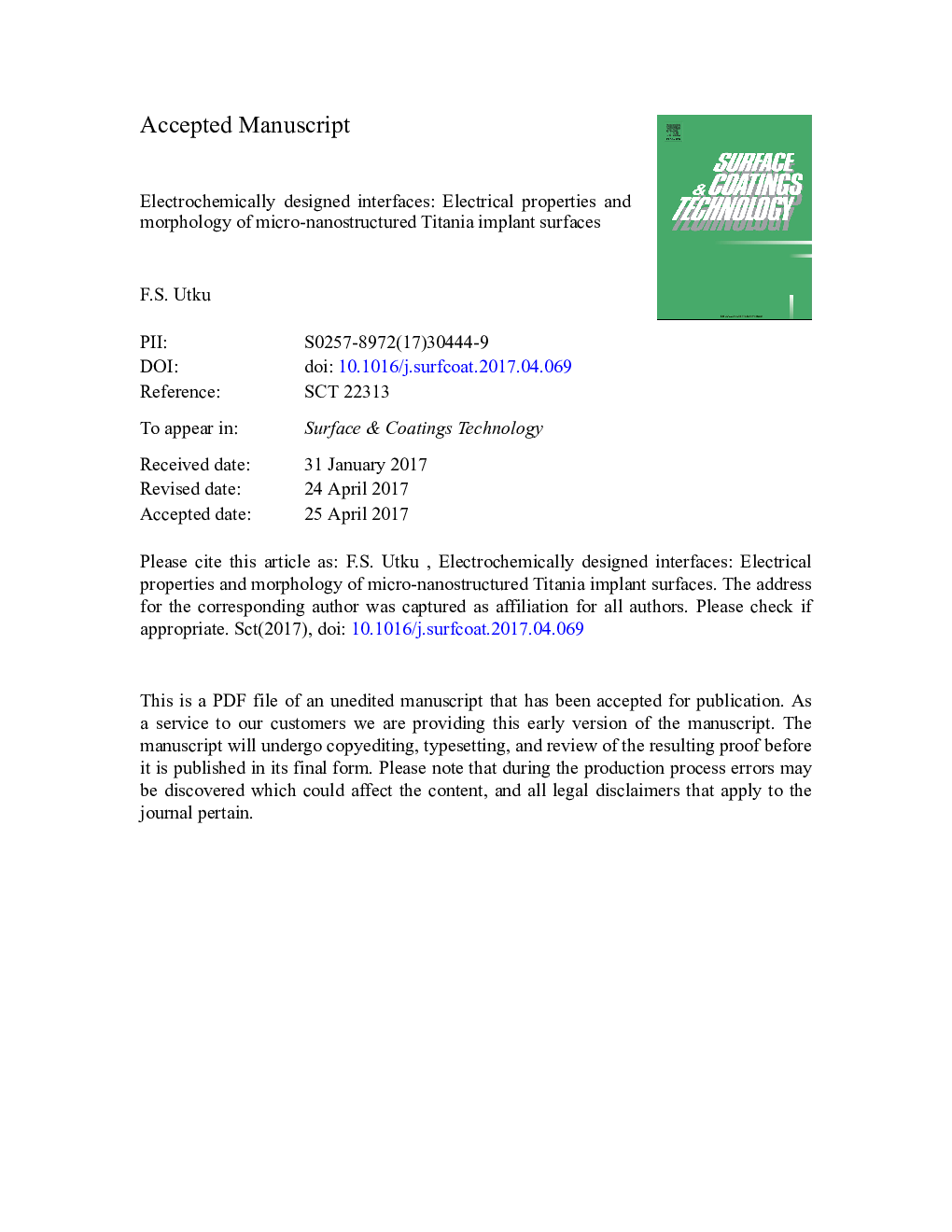| Article ID | Journal | Published Year | Pages | File Type |
|---|---|---|---|---|
| 5465115 | Surface and Coatings Technology | 2017 | 28 Pages |
Abstract
Designing Titanium implant interfaces is essential not only for the prevention of corrosion, but also for the promotion of osteointegration. Surface morphology and surface charge are crucial determinants in the construction of biocompatible osteoconductive orthopedic and dental implants. Thus, generation of surfaces with optimal topographic and electrical properties for cellular growth has been aimed. In this study, surface chemistry and morphology of cp Titanium plates were modified by anodization at 30 V for 60 min, in dual acidic solution (48 wt% H2SO4-18 wt% HCl) at 40 °C and in alkaline solution (5 M KOH) at 40°, 60° and 80 °C. Titanium surfaces were characterized for morphology, crystallography, wettability, bulk resistivity, corrosion resistance, surface conductivity and capacitance. Morphological characterization using FE-SEM revealed micro-to-nanoscale porosity, with nanosized pores formed within the micropores, generating a hierarchically arranged micro-nano network on Titanium surfaces anodized under all thermal conditions. Hydrophilicity decreased with increasing alkaline anodization temperature (control, 100 ± 0.7°; 40 °C, 23.3 ± 3.0°; 60 °C, 43.5 ± 2.1°; 80 °C, 55.3 ± 2.3°). The XRD analysis displayed only Ti peaks at 34.5°, 38°, 40°, 53° and 63° 2θ. Increasing alkaline anodization temperature modified the electrical properties of Titanium plates. Mott-Schottky analysis displayed an increase in capacitance as indicated by steeper slopes and linearity extending over a greater potential range with increasing temperature. Corrosion current density (Icorr) was experimentally determined as 1.05 Ã 10â 7A/cm2, 5.95 Ã 10â 8A/cm2, 3.79 Ã 10â 9A/cm2, 3.92 Ã 10â 9A/cm2 while charge carrier density was calculated as 3.44 Ã 1020/cm3, 3.50 Ã 1019/cm3, 2.05 Ã 1019/cm3, 1.01 Ã 1019/cm3 respectively for the control, 40 °C, 60 °C and 80 °C samples. All things considered, samples modified in 5 M KOH solution at 60 °C displayed optimal micro-to-nanoporosity, lowest corrosion current density and anodic voltage. The electrical properties of modified Titanium surfaces have indicated that it may be more suitable to use Potassium hydroxide in the anodization of biomedical implants which require a biocompatible, osteoconductive topography, high capacitance and high corrosion resistance.
Related Topics
Physical Sciences and Engineering
Materials Science
Nanotechnology
Authors
F.S. Utku,
